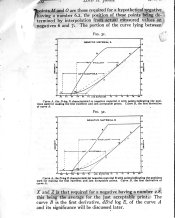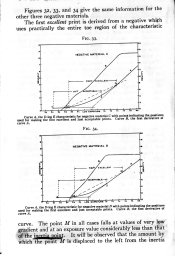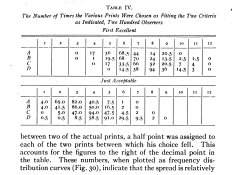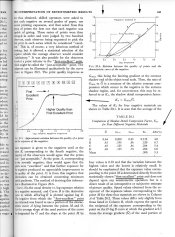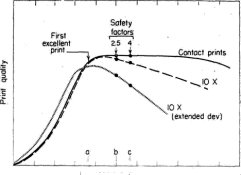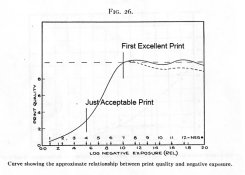Now, we have been talking about the film, but remember that the printing process enters into the reproduction of an image. This process is the result of multiplying (dD/dLogE)paper * (dD/dLogE)film at any one point to get the curve of the print. Since all of these curves are considered cubic splines, they are difficult to express in a single equation, but the differential of the slopes can be used at any point.
Well, how does this help or hinder us?
First we must consider the fact that the eye perceives the world as a straight line (with extensions beyond the x and y axes due to the iris of the eye and the rhodopsin and its derivatives on the retina), and it accomplishes this perception by integrating all scenes, even prints that we make. But prints are not linear, they are curves as noted above and thus a print with a slope of 1.0, which might be considered as being satisfactory, is integrated by the eye to give a very low contrast and is considered unacceptable.
A print, to be acceptable to the eye, must have a mid scale slope of around 1.5 so that when integrated by the eye with the toe and shoulder, the overall image appears to have a slope of 1.0.
So, here is our equation: slope of film x slope of paper = slope of print and we have some definitions too.
Slope of film = 0.6, slope of paper = 2.5 and slope of print = 1.5. Does this work? .6 x 2.5 = 1.5 < yes it does and thus we see why prints look good if exposed above point "A" on the film. What happens if the toe of the film meets the shoulder of the paper? These are reproduced as shadows, while at the other end, the shoulder of the film and the toe of the paper reproduce highlights. At this point, the slope of the film is no longer 0.6 and the slope of the paper is no longer 2.5 and thus the slope of the print falls below 1.5 thus making the eye perceive the image as low in contrast, dull and lacking in detail. You can see this quickly by making a step wedge onto film and then printing that onto paper.
The point of this exercise is to prove why prints get better as you move up onto the straight line, and it is also why Kodak and other companies have tried to modernize the curves of all film products to maximize the straight line portion. In fact, it is so good that at this time, it is not necessary to overexpose negative films by 1/3 stop. Spot on is better!
PE








